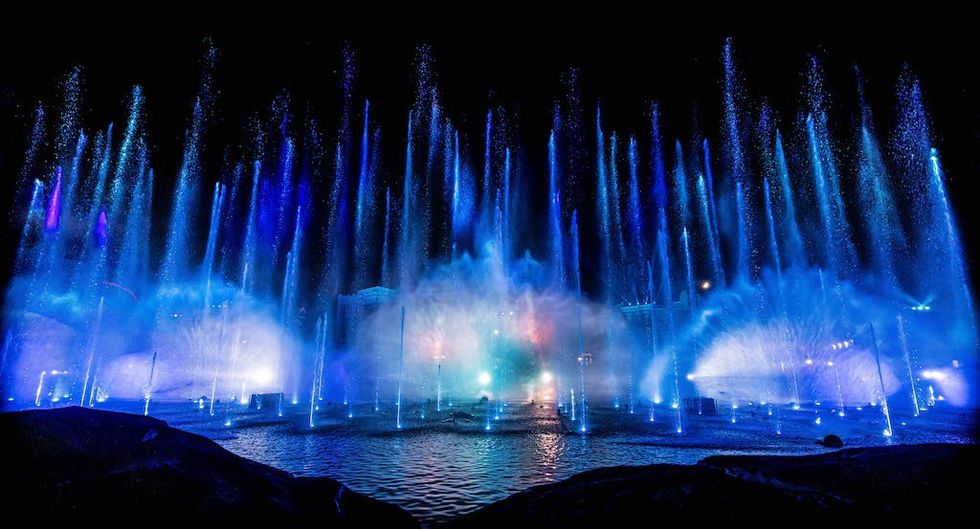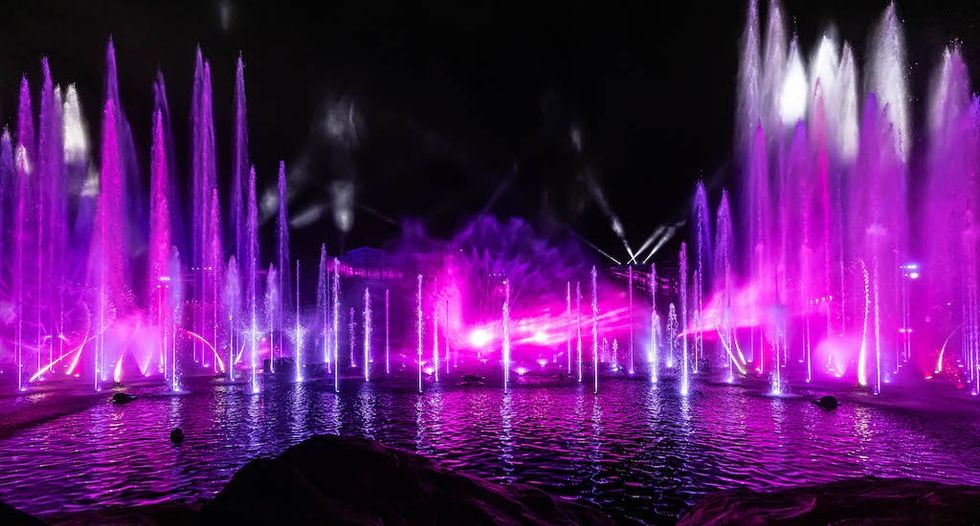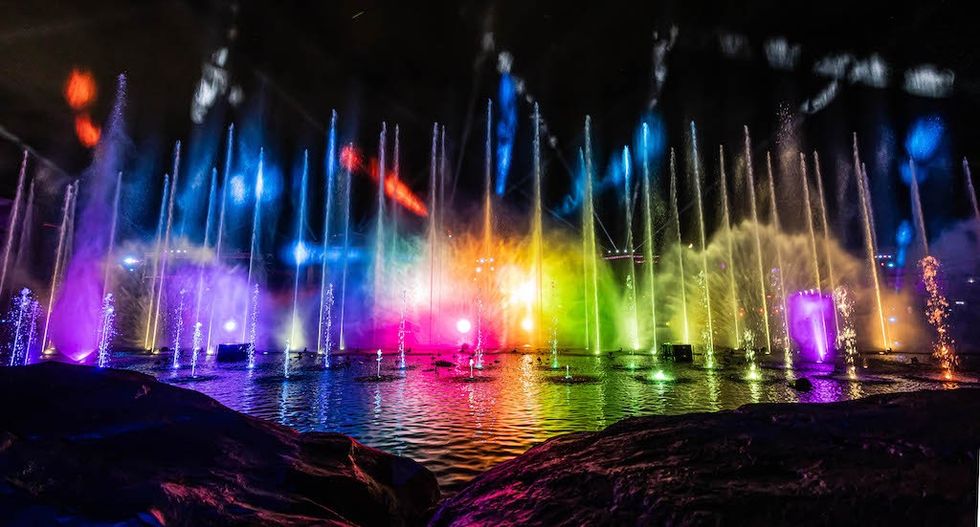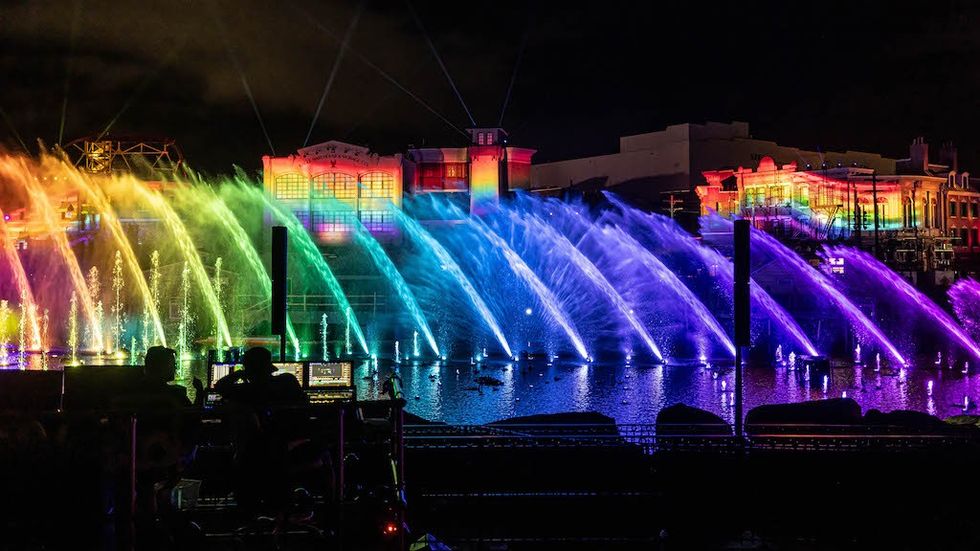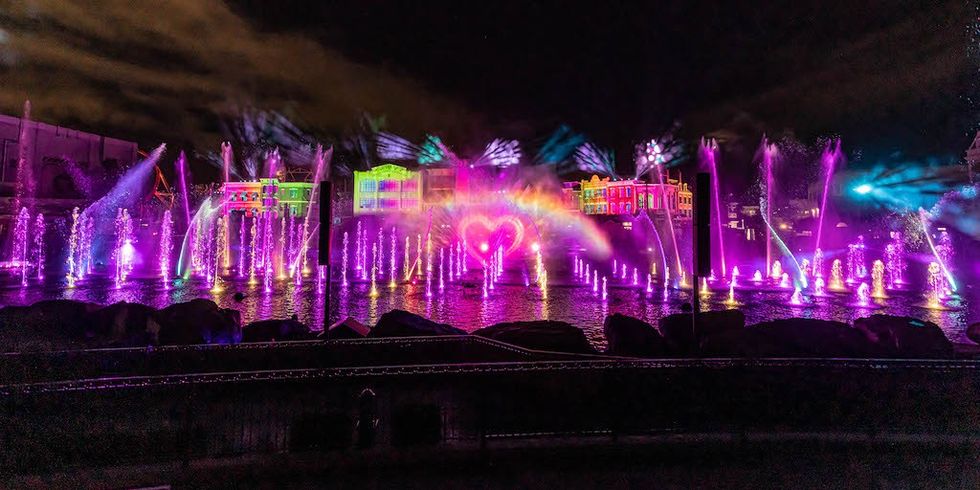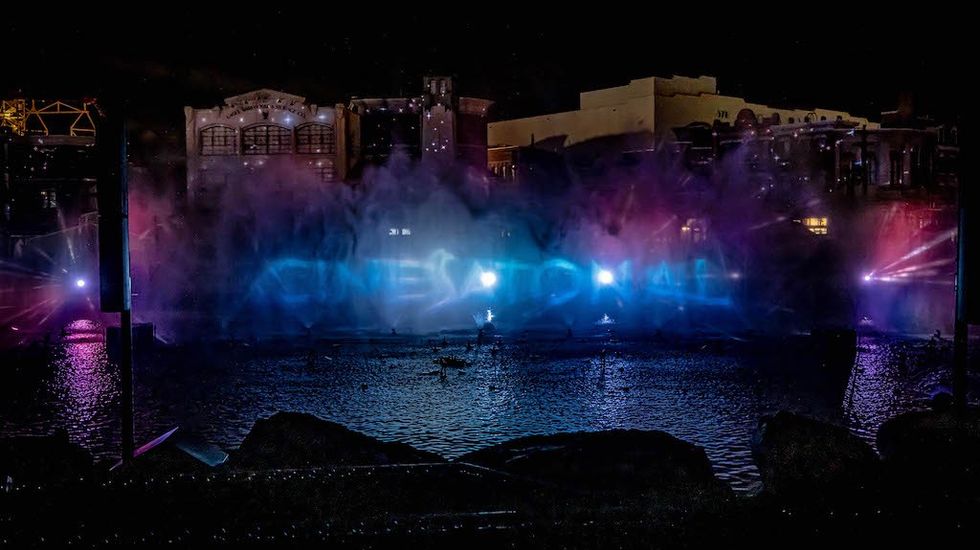On Saturday 31 May, V&A East Storehouse opens to the public after a decade of planning and community consultation. It is both a working store for V&A and a new visitor attraction as part of East Bank, the new cultural quarter in the Queen Elizabeth Olympic Park in East London.
What was part of the former London 2012 Olympics Media and Broadcast Centre (now Here East) is now a purpose-built home for over 250,000 objects and 350,000 books, as well as 1,000 archives. Designed by world-renowned architects Diller, Scofidio + Renfro, it spans three levels and an area of 16,000 square metres.
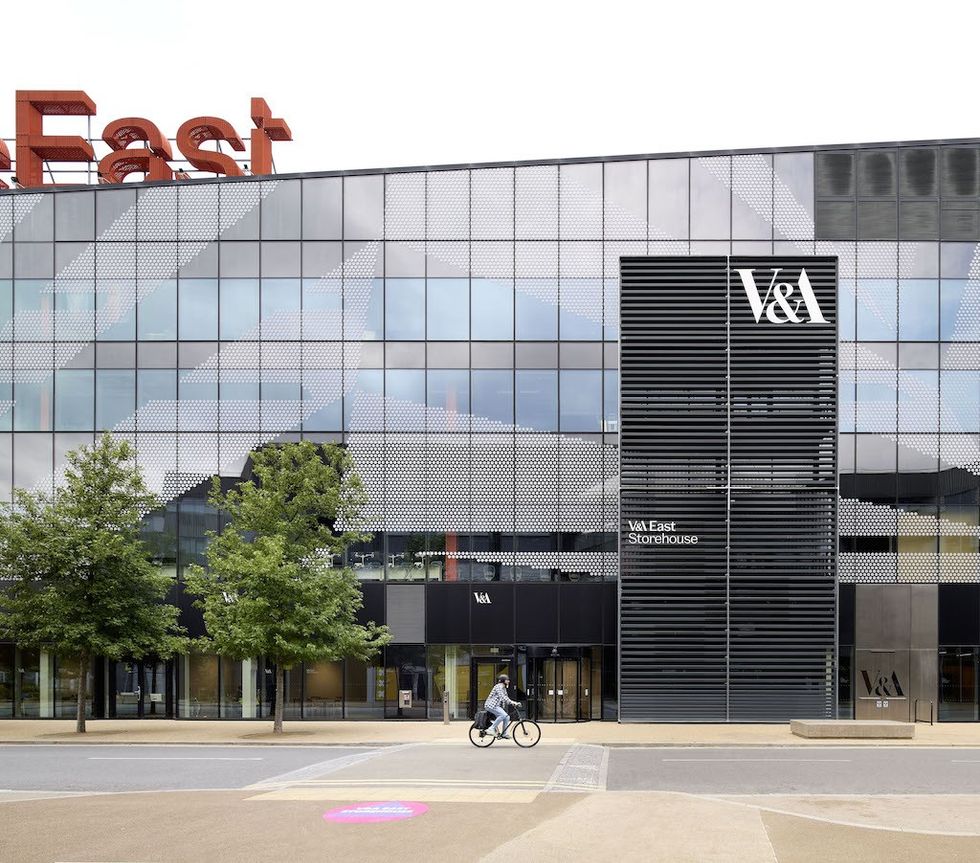
A groundbreaking facility in size, scale, and vision, V&A East Storehouse invites visitors to explore more than half a million works across diverse creative fields. This includes fashion, theatre, streetwear, sculpture, design classics, and pop culture pioneers.
The active and vibrant working museum store offers an expansive self-guided experience. It allows guests to engage with national collections on an unprecedented scale and in unprecedented ways.
Before the opening, we had the chance to see the collection. We also spoke to some of the team that brought this bold vision to life.
A problem and an opportunity
V&A East Storehouse is the first of two new cultural sites under V&A East to launch in East London. The second, V&A East Museum, will open in spring 2026 and emphasises the transformative power of creativity and making.
Speaking to blooloop in 2020, Tim Reeve, deputy director and chief operating officer, explained the background of the project, which he has been working on since he first assumed the role in 2013. On his first day, he was presented with an inch-thick master planning document about possibilities in the Olympic Park.
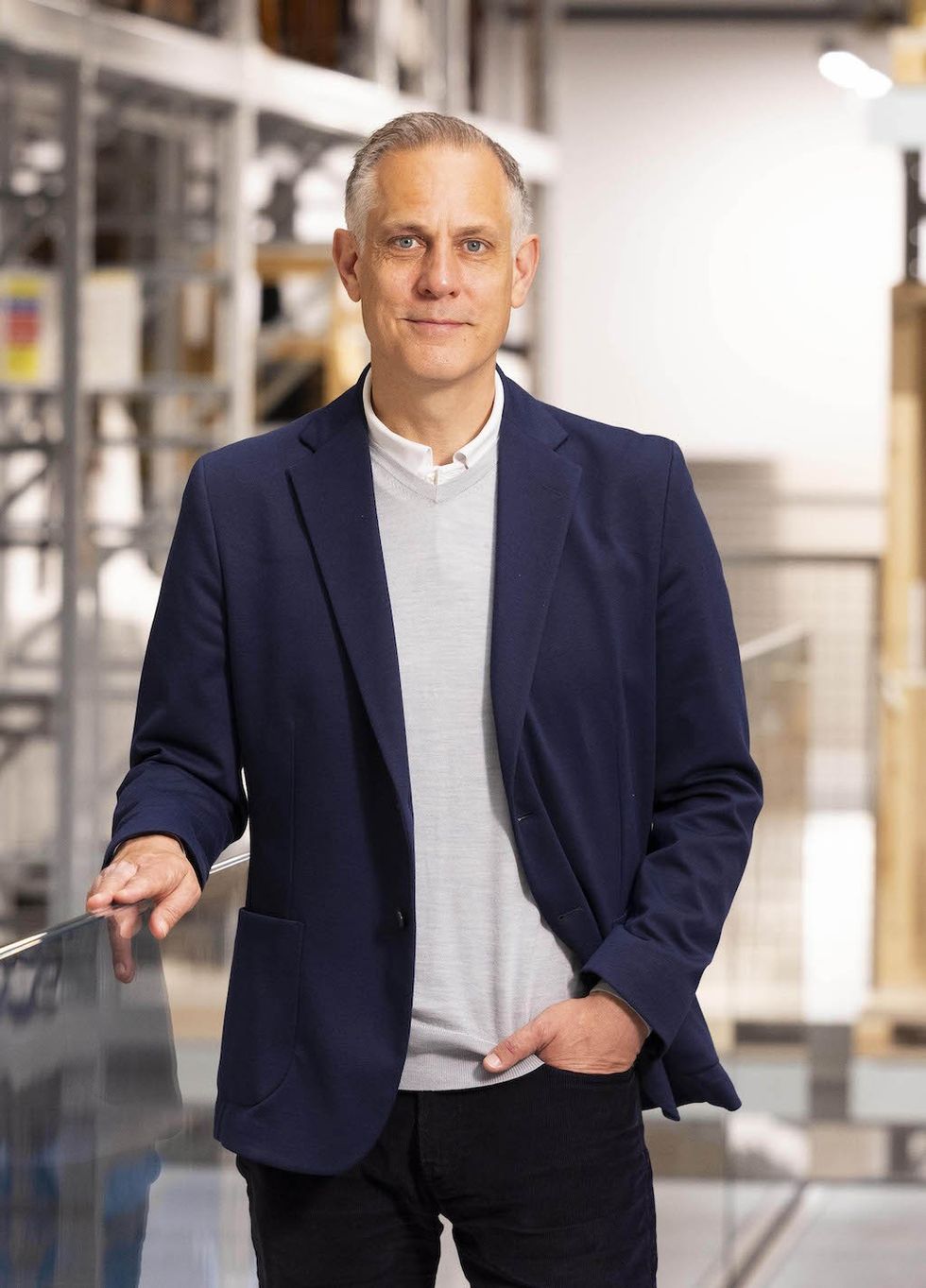
“The director said, ‘Have a look at this and tell me what you think.’ It was described in various ways. But I always quite liked this idea of a new ‘Albertopolis’ for the digital age,” he said.
On the one hand, the V&A had the opportunity to create a new museum. But, at the same time, it had a problem to solve: the entire reserve collection, previously housed in Blyth House in West London, needed a new home.
“This lightbulb moment happened. We thought, ‘Hold on, we’ve got to bring these two things together.’
“Imagine the situation. The V&A is moving to Stratford; it’s bringing its expertise and its desire to connect with a new audience. And it can also bring 250,000 objects, 1,000 archives, and 350,000 library books. We were able to make that part of the proposition, which is to bring our entire non-display collection and to offer it to East London.”
Now, as it prepares to welcome visitors for the first time, Tim Reeve calls V&A Storehouse “A completely new cultural experience – and your backstage pass to the V&A, transforming how you access your national collections on a scale unimaginable until now.”
Creating V&A East Storehouse
This groundbreaking new museum project builds on the V&A’s commitment to the principle of art and design for all and its mission to inspire the artists and designers of today and tomorrow.
“V&A East Storehouse is what the V&A’s founder, Prince Albert, presciently described as a great treasury, or storehouse of art and science, reimagined for an entirely different demographic and urban context,” said Reeve during the preview event.
“But Storehouse is also an idea, the idea that in creating a new museum typology through clever adaptive reuse of an industrial building with a new mode, atmosphere and rhythm, we can transform access to our peerless collections of art, design and performance and over 1,000 archives.”
By opening up its collection, the V&A aims to demystify the world of museums. It enables a new generation to engage with objects and ideas, while fostering an understanding of what the museum has and what its team does.
This, Reeve added, will result in “a greater appreciation for the power of creativity, a newfound sense of ownership of their national collections…ensuring their relevance and safeguarding them for future generations.”
Democratising access to the collection
V&A East Storehouse is a genuine co-production project. Over the last eight years, the team has worked with diverse local groups, including the V&A East Youth Collective and nearly 100 local schools and colleges.
“Literally thousands of people who call East London home have welcomed us here so generously, given of their time and stories to critique our thinking and challenge our assumptions and help shape and design almost every aspect of the experience,” said Reeve.
Meanwhile, through the development of the Order an Object service, the museum can provide meaningful, democratised access to a world previously thought to be the exclusive preserve of established creatives or researchers.
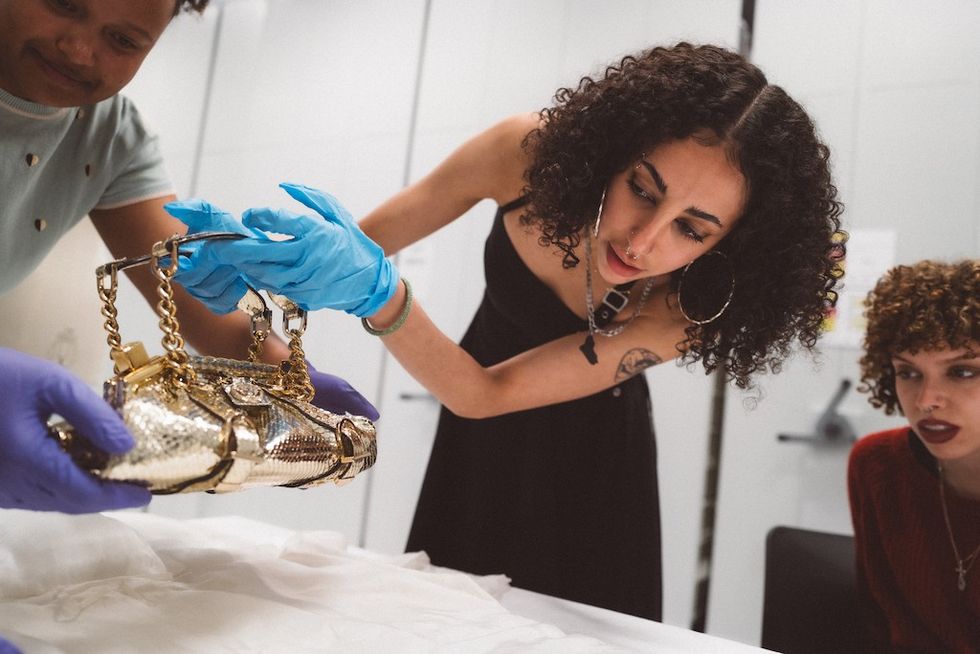
“At the V&A, this is what we do. We have maxims and words of inspiration that we return to time and again to keep us true to our mission to use creativity as a power for good and as a catalyst of opportunity and inspiration."
“Our founding director, when describing the purpose of the South Kensington Museum, as it was then, talked about ‘all of this for all of us,’ or ‘a book that is open and never shut,’ and ‘a schoolroom for everyone.’
“And inscribed on the wall here at Storehouse are the words, ‘If you’re into it, it’s in the V&A.’”
A unique design for V&A East Storehouse
Diller, Scofidio + Renfro is the architecture firm that brought this vision to life. Speaking at the preview event, partner Elizabeth Diller said:
"On average, 3% of a museum's collection is on display at any given time. The other 97% is hidden away in a basement or off-site in a warehouse. And as museums accumulate more and more collections, the proportion of works on display is just going to diminish over time."
This is a growing concern in the museum field, particularly when considering the excessive use of energy and resources. “The notion of hybridising something that we already know—storage and display—produces this paradigm shift.”

The architecture firm identified several key driving ideas from the brief.
“The first is the Storehouse, conceived in three concentric rings between public and private. So, the most public is in the centre. Then, the middle ring is semi-private. And then on the edge, on the absolute periphery of the building, is the most private.”
A typical institutional building is progressively restricted, moving away from the front door and to further and more inaccessible places, with a deep footprint. “It's the opposite of what we have here. It's essentially an inside-out building.”
Leaning into the eclectic collection
The second driving idea was that the Storehouse would defy the logic of conventional taxonomies in a museum.
The V&A has an incredibly eclectic collection. Diller said: “Where else would you encounter suits of armour, stage cloths, biscuit tins, building fragments, puppets, thimbles, chandeliers, motorcycles, in one place, next to each other?
"The collection is unusually eclectic, but also vast. It's a collection of collections. And the prospect of organising the V&A’s storage raised the question: how do we celebrate the heterogeneity of the V&A’s collection as well as its vastness?”
So, the team, she explained, decided to lean into it—the strange taxonomies, the wide variety of sizes, the myriad materials, and the broad range of geographies and historical periods. “The inspiration for this came from the cabinet of curiosities, this 16th-century form of display. It was more of a private collection, but also put delirious things next to one another.”
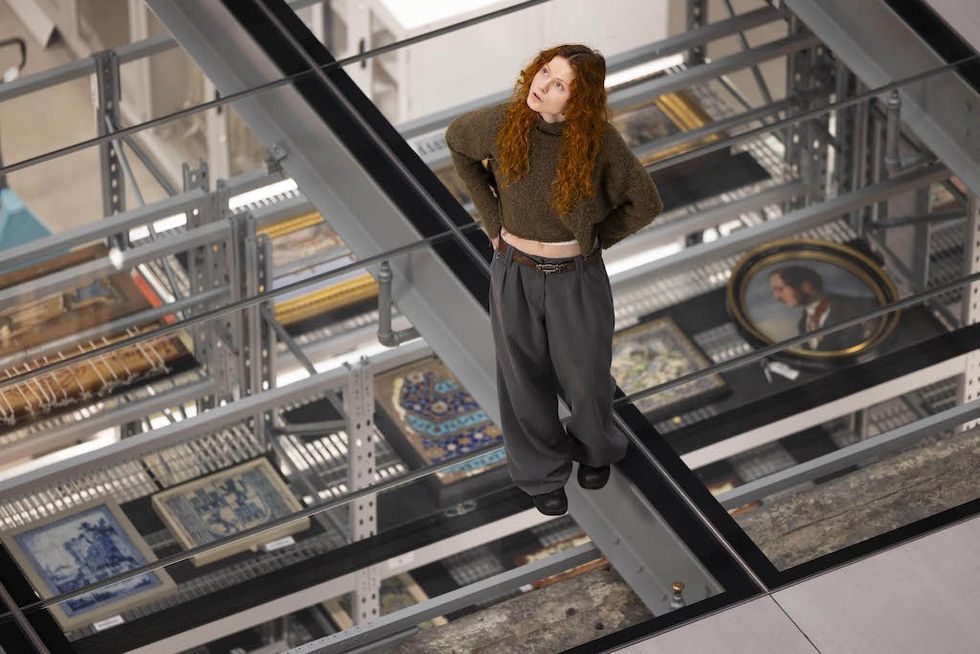
Visitors’ arrival in the central area, the Weston Collections Hall, was designed to be cinematic:
“Unfolding slowly from the unassuming façade outside, through a slim lobby, burrowing one's way through this tunnel stair, through the collection already, and entering through the floor into the epicentre of this immersive, vast cabinet of curiosities, racks filled with objects would appear to stretch infinitely.”
Rather than following a curatorial voice, guests have the opportunity to follow their curiosity as they begin to explore the racks that surround them.
“It's a very different kind of paradigm,” said Diller. “It's not a one-way system, it's a kind of two-way system, where we give agency to the public.”
The curatorial approach
Building on this architectural approach, the curatorial team, led by Brendan Cormier, chief curator for V&A East, then had to decide what the visitor experience could look like.
“We approached that with a few fundamental principles in mind,” he said, speaking at the preview event. “One, which many museums are talking about now, is around the notion of polyvocality or multivocality.” The team aimed to incorporate the presence of multiple voices, perspectives, or narratives, reflecting that the space is for everyone.
Also, he added:

“We wanted to think about how we could construct display spaces and reorganise these objects in such a way that it reflects in real time the dynamics of this building."
“People are coming in and out all the time. People are pulling out objects to do research. We're doing our own research. We're preparing displays. Community groups are coming in to look at works that resonate with them. How can we come up with a display system that would properly reflect that in real time?”
The result is a flexible display system. This allows objects or projects to be changed without the usual amount of planning.
The other ambition was to ensure that the V&A East Storehouse could also serve as a space for performances, talks, and activations, enabling dynamic programming.
“Often, we fall into this trap of saying, ‘The reason this thing is important is because…’ and that is the story. But by radically opening up these collections, we can also radically open up the input and the interpretation of these spaces to find multiple meanings.”
Mini-displays
The central Weston Collections Hall comprises three levels. It showcases over 100 mini curated displays, cleverly integrated into the ends and sides of storage racks, allowing visitors to explore them at their own pace.
A flexible ‘kit of parts’ system allows objects to be added to or removed from the display more easily and frequently.
“We have flexible displays,” explained Cormier on the tour. “If you come in and you're studying something really interesting that we want to put on display, we've got a flexible, printable label that we slot in. We'll put your name, we will do the publishing. We'll be able to assemble a display in real-time.
“The whole idea is that these displays, dotted throughout the entire building, reflect in real-time the activity that's happening. I don't even like to call them displays. We call them visible storage, or storage on display.”
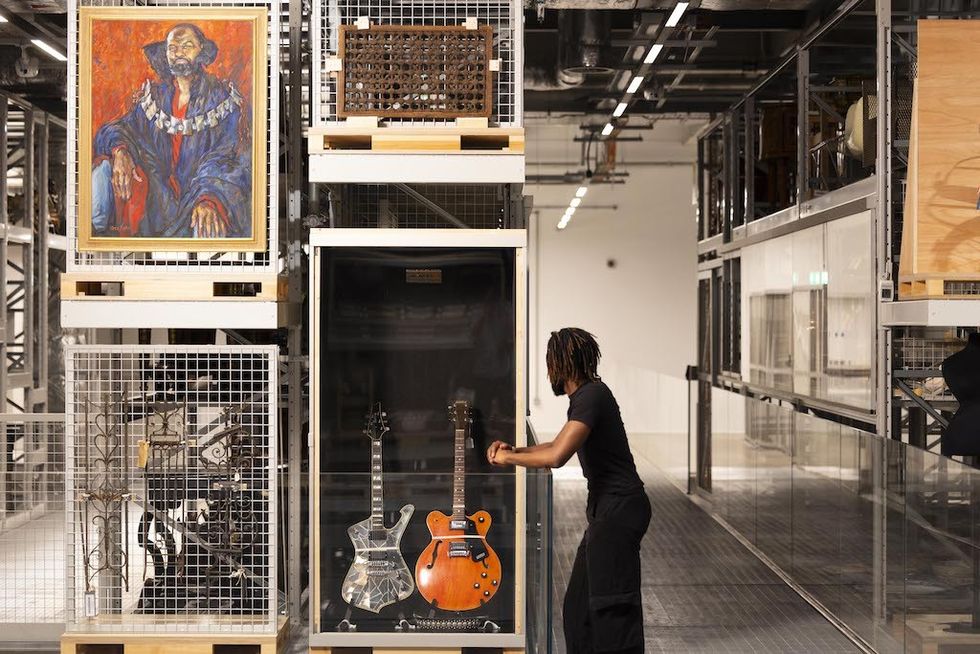
Currently, displays showcasing East London creativity feature a 17th-century sampler embroidered by a Hackney schoolgirl, a late 19th-century silk theatre programme for a new Stratford music hall, and a 1980s poster for Hackney's Lenthall Road Workshop, linked to local feminist, anti-racist, and LGBTQ+ rights groups.
Other displays include "African Textiles: Archives of Knowledge," showcasing fashion by Imane Ayissi, Xanthe Somers’ 2022 sculpture "Fruits of our Forefathers," which explores colonial history in Zimbabwe, and Sanaa Gateja’s wall hanging "Ripe and Ready" (2022).
The objects on display are intended to showcase the depth and breadth of the collection. They range from 13th-century Jain sculpture to Issey Miyake fashion, Isokon Furniture by Marcel Breuer, Zaha Hadid-designed shoes, a Piaggio scooter customised by Daniel Liebskind, and Thomas Heatherwick’s model for London 2012’s Olympic Cauldron.
Large objects at V&A East Storehouse
The Weston Collections Hall also features six large-scale objects, many of which have been unseen for decades due to their size.
These include the 1930s Kaufmann Office, the only complete Frank Lloyd Wright interior outside the United States. There is also a 15th-century carved, gilded ceiling from the lost Torrijos Palace near Toledo, Spain, and a full-scale Frankfurt Kitchen by Margarete Schütte-Lihotzky, which revolutionised 20th-century kitchen design.
Additional items consist of the 17th-century Agra Colonnade. This represents a remarkable example of Mughal architecture from the bathhouse at Agra Fort. There is also the largest Picasso work in the world. This massive Ballets Russes Le Train Bleu theatre stage cloth measures over 10 metres in height and 11 metres in width, and has rarely been displayed since its debut in 1924.
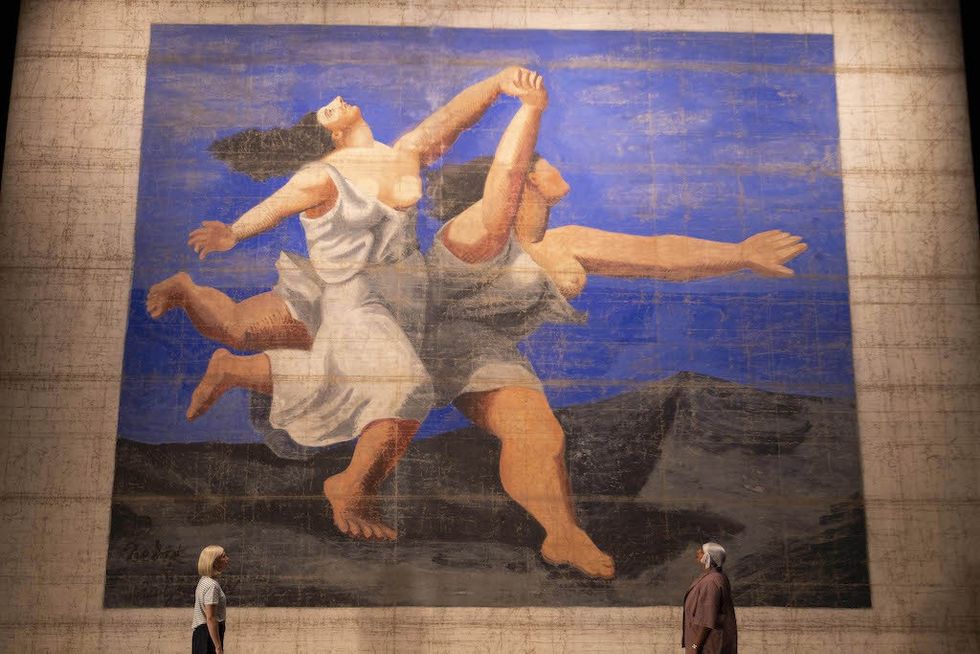
Giving a tour of the collection, Cormier said:
“Stage cloths are extremely space-hungry, and we would never have the proper space to display these at South Kensington. So, one of the priorities was to come up with a space that could stage some of these monumental pieces.
“This floor space is also one of the largest unimpeded floor spaces we have in our collection of museums. We'll have the opportunity to have live conservation work on objects here. We can close off this room, and we then have a mezzanine space that overlooks it.
“This building is really about rendering visible so much museum labour and what it takes to maintain collections.”
Co-production projects
One of the other large objects, overlooking the Weston Collections Hall, is an architectural fragment from Robin Hood Gardens, a former residential estate in Poplar, East London.
“Robin Hood Gardens is in the process of being demolished,” explained Cormier. “It was widely understood as an ambitious icon of mid-century social housing design. For us, it was really important to be able to, as collectors of history and architecture, preserve the memory of a moment in time when great care and thought were put into how we live together communally.”
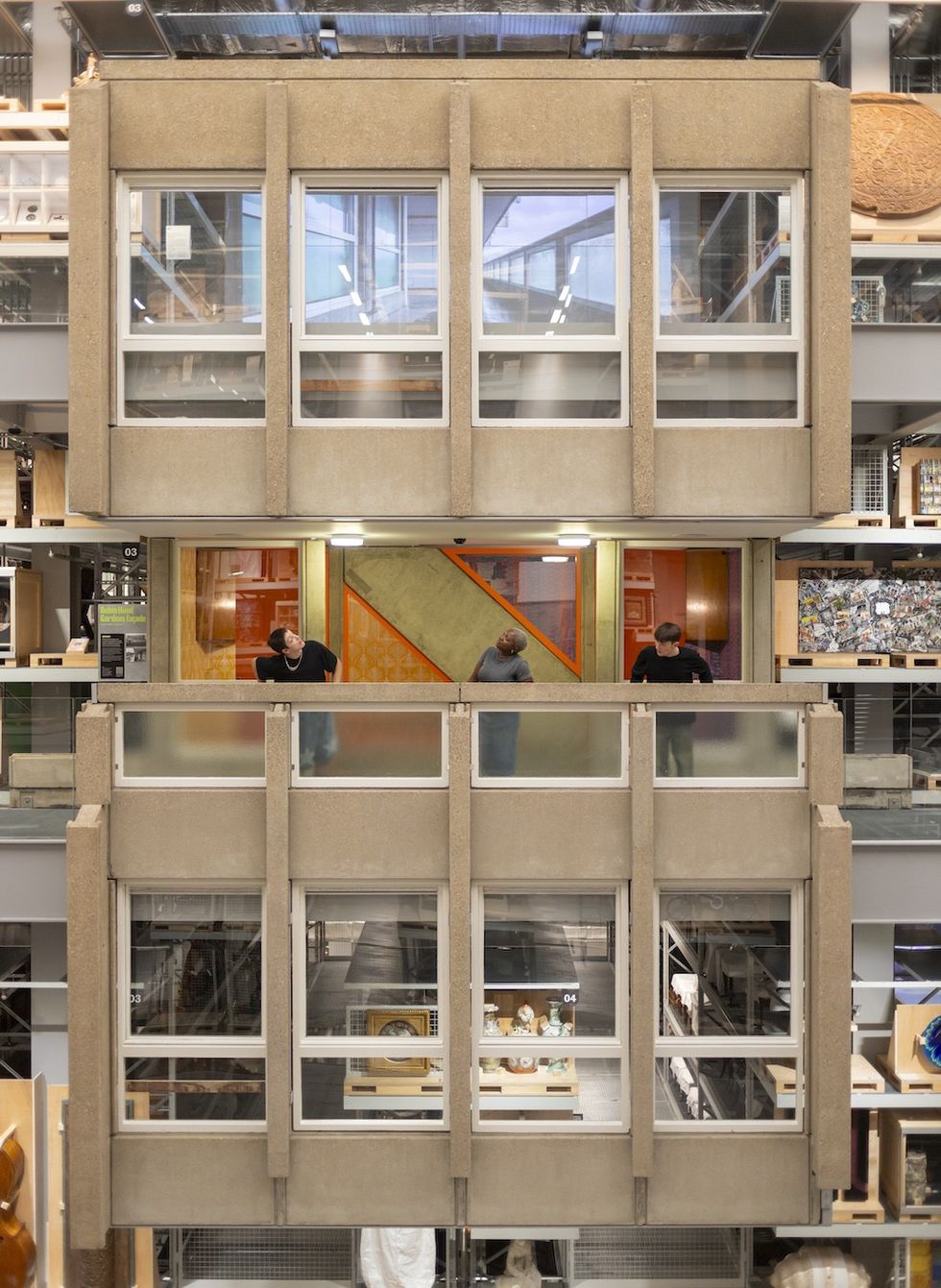
These large objects are brought to life further through a series of co-production projects in collaboration with young East Londoners, communities, and creatives. This highlights multiple new voices and perspectives across the space.
Afia Yeboah, senior producer for community partnerships and participatory practice at V&A East, added:
“For the past two and a half years, we've been developing oral histories so that we are embedding residents’ voices into the design.
“We're wanting to present a real, lived experience, the full spectrum of what it was like to live in Robin Hood Gardens, from 1972 up until 2024. A range of different residents have shared their lived experiences with us. We have continued to build on this through other aspects of co-production.
“We've worked collaboratively with young people. There is a film that's been produced. There's also a publication. However, all of this has been about thinking about the future of social housing and the ways we can activate spaces, while also centring people in the display at the same time.”
Order an object
Order an Object enhances access to the V&A’s collection, making it more personal and accessible. With over half a million pieces available at V&A East Storehouse, visitors can explore online, choose up to five items, schedule a viewing, and invite a friend to examine them closely.
Kate Parsons, director of collections care and access at V&A, said:
“Some of that access is to observe very fragile objects. Some of it may involve touching objects, allowing people to feel the fabric, weigh them, or inspect them. And some of that will be handling objects.”
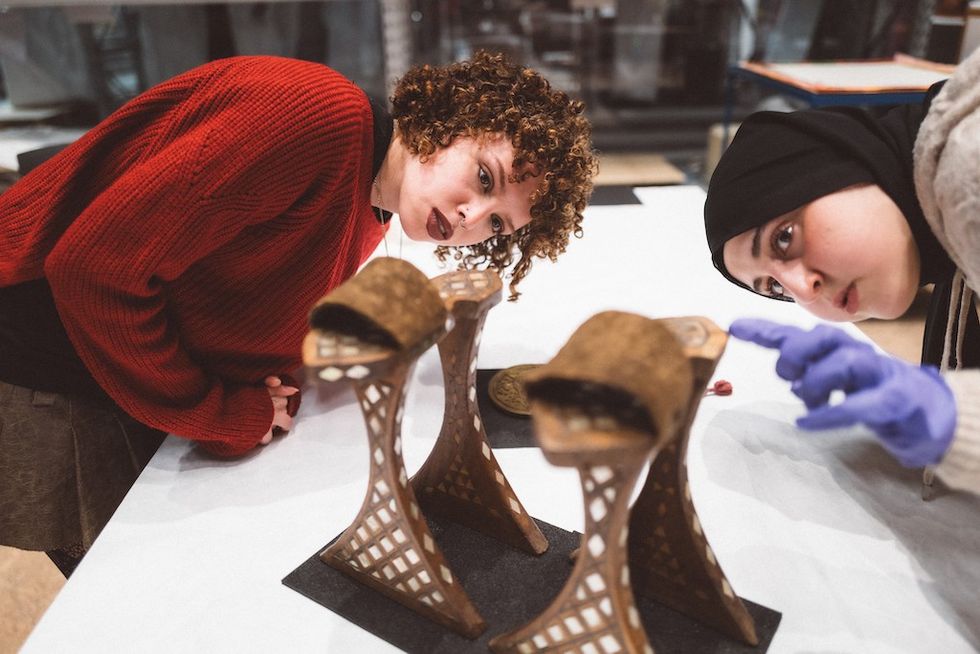
“We’ve had a phenomenal response already. We’re seeing a few things that are very popular, and we’re understanding, for the first time, when given every single object in the collection to choose from, rather than us determining what people want to see, the types of objects people are choosing. The diversity among the five selected objects is fascinating.
“Part of the experience as well, you get that unboxing moment, that ‘wow’ moment of actually seeing something.”
Since going live on 13 May, people have booked 250 appointments to view more than 1,000 objects.
Meanwhile, Object Encounters are new serendipitous opportunities for small groups of visitors to go behind the scenes with the Collections Access team and get up close with objects.
With sign-ups on the day and in groups of up to six people, the first featured Object Encounters will include viewing a 1958 Givenchy silk taffeta evening cape like Audrey Hepburn wore in Funny Face.
Behind the scenes at V&A East Storehouse
V&A East Storehouse also features four new multi-purpose conservation studios. Visitors can view the activities in the studio through a glass overlook. At the same time, a live feed screen and mobile cameras enable conservators to demonstrate their work and interact with visitors.
The in-house photography team will document the V&A’s collections and latest acquisitions in newly established photography and post-production studios, employing sophisticated image-making techniques such as 3D modelling, photogrammetry, and infrared thermography for research.

The Collections Care and Access teams will conduct technical and logistical tasks throughout the V&A East Storehouse, utilising specialised equipment to relocate and set up objects.
V&A East Storehouse also houses the V&A’s Archive of Art and Design and Theatre & Performance. These archives include over 1,000 records of creatives and organisations from Vivien Leigh to Talawa Theatre Company, Wilton’s Music Hall, The Glastonbury Festival Archive, Lucienne and Robin Day, Eileen Gray, The House of Worth and Paquin, Cecil Beaton’s scrapbooks, and Sir Eduardo Paolozzi’s Krazy Kat Arkive of Twentieth Century Popular Culture.
In addition, it houses over 10,000 items from the National Art Library, including a selection of comic books and graphic novels.
The V&A East Storehouse reimagines museum access by transforming collection care into a hands-on experience for the public. It invites visitors behind the scenes and also promotes inclusive interpretations, setting a new standard for openness and participation in the cultural field.
As the lines between archive and audience blur, the Storehouse becomes not just a place of preservation, but a space of possibility.
Top image: View of Weston Collections Hall, which features over 100 mini curated displays, at V&A East Storehouse. Image by Kemka Ajoku for V&A
Charlotte Coates is blooloop's editor. She is from Brighton, UK and previously worked as a librarian. She has a strong interest in arts, culture and information and graduated from the University of Sussex with a degree in English Literature. Charlotte can usually be found either with her head in a book or planning her next travel adventure.


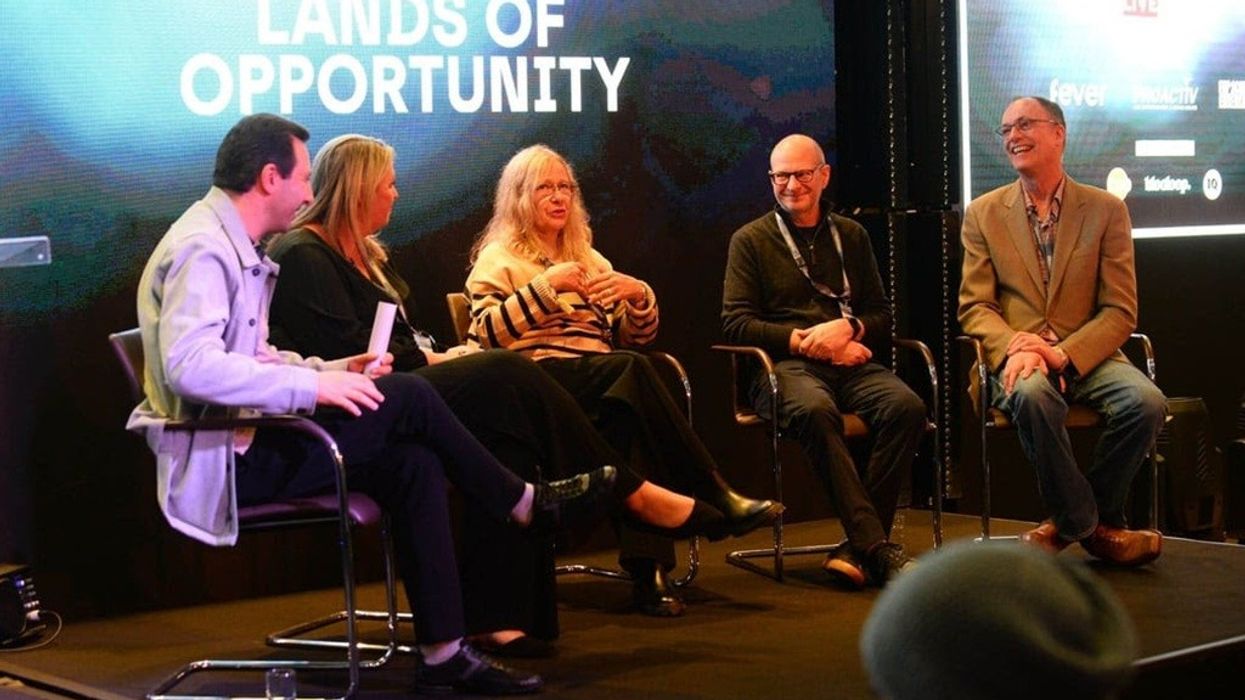
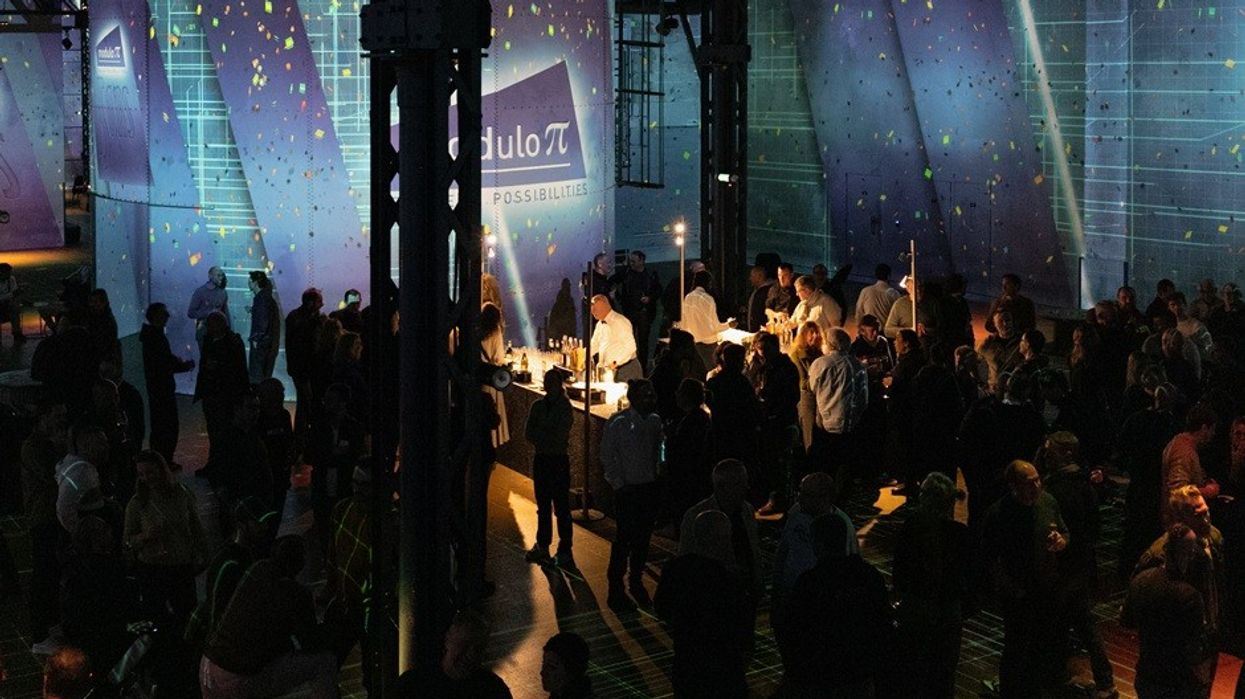

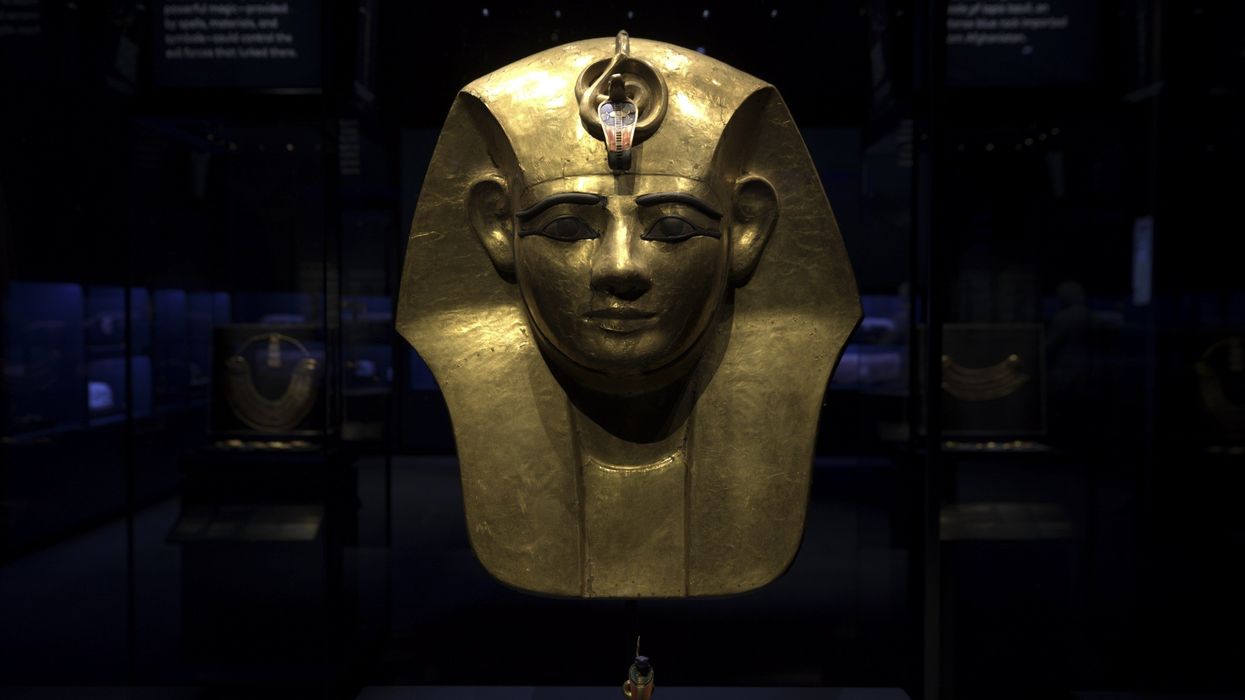

 Andrew Thomas, Jason Aldous and Rik Athorne
Andrew Thomas, Jason Aldous and Rik Athorne
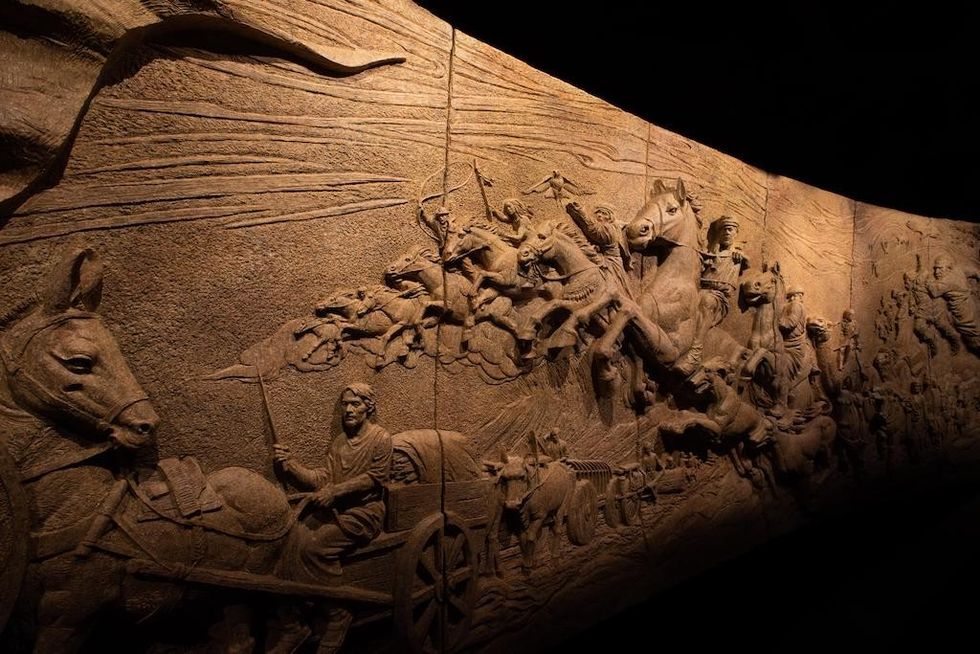
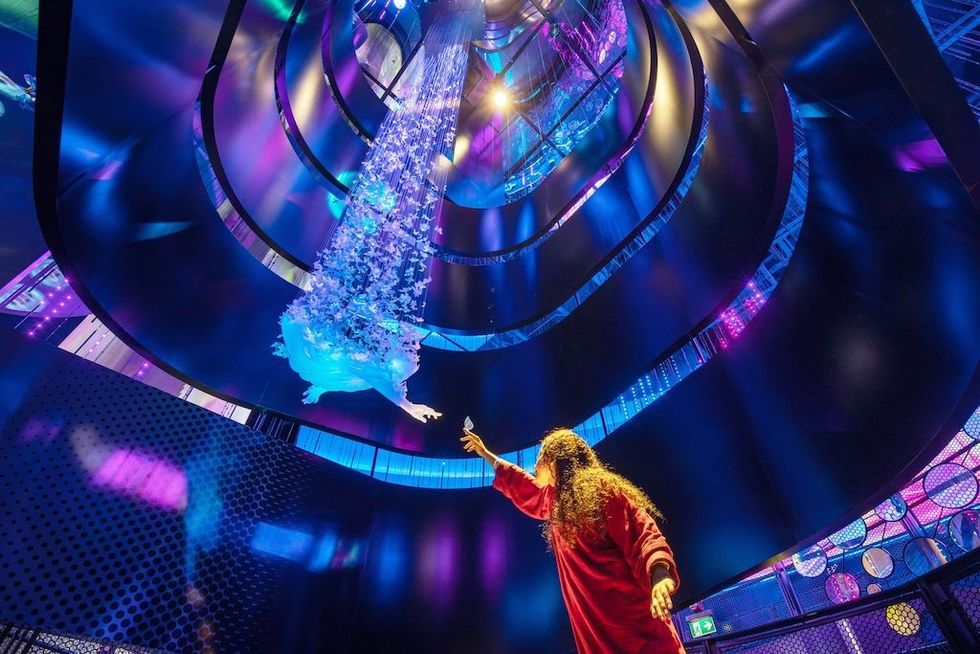




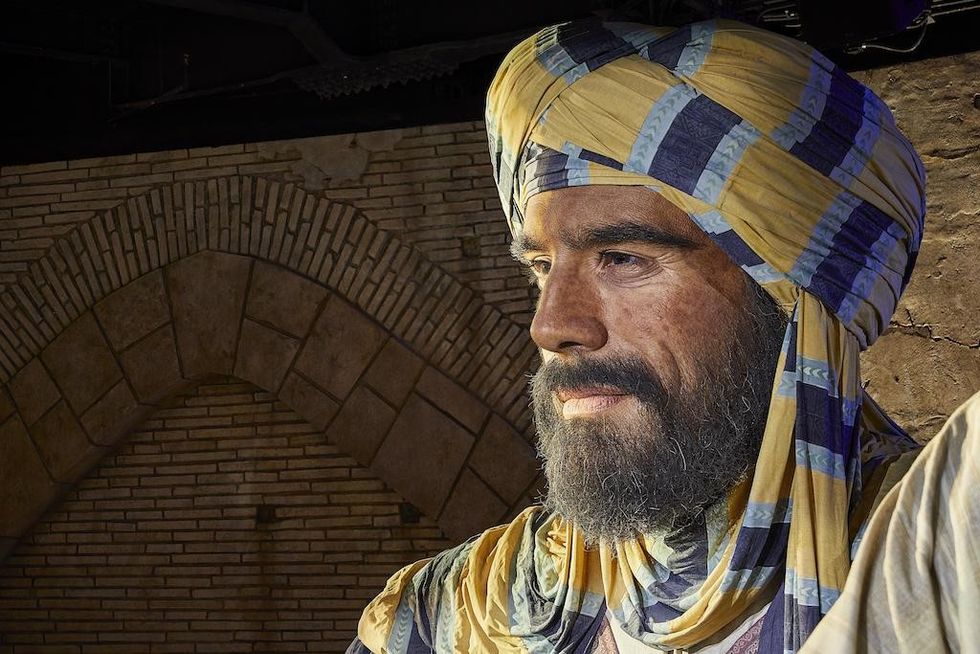


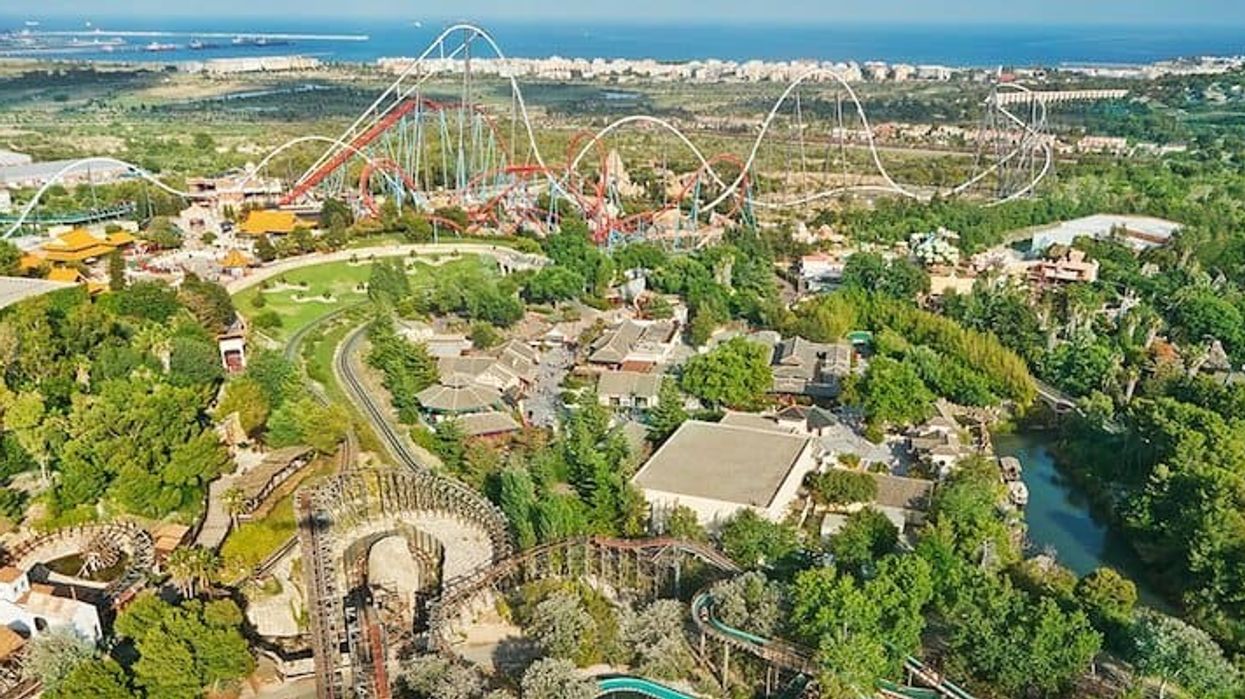




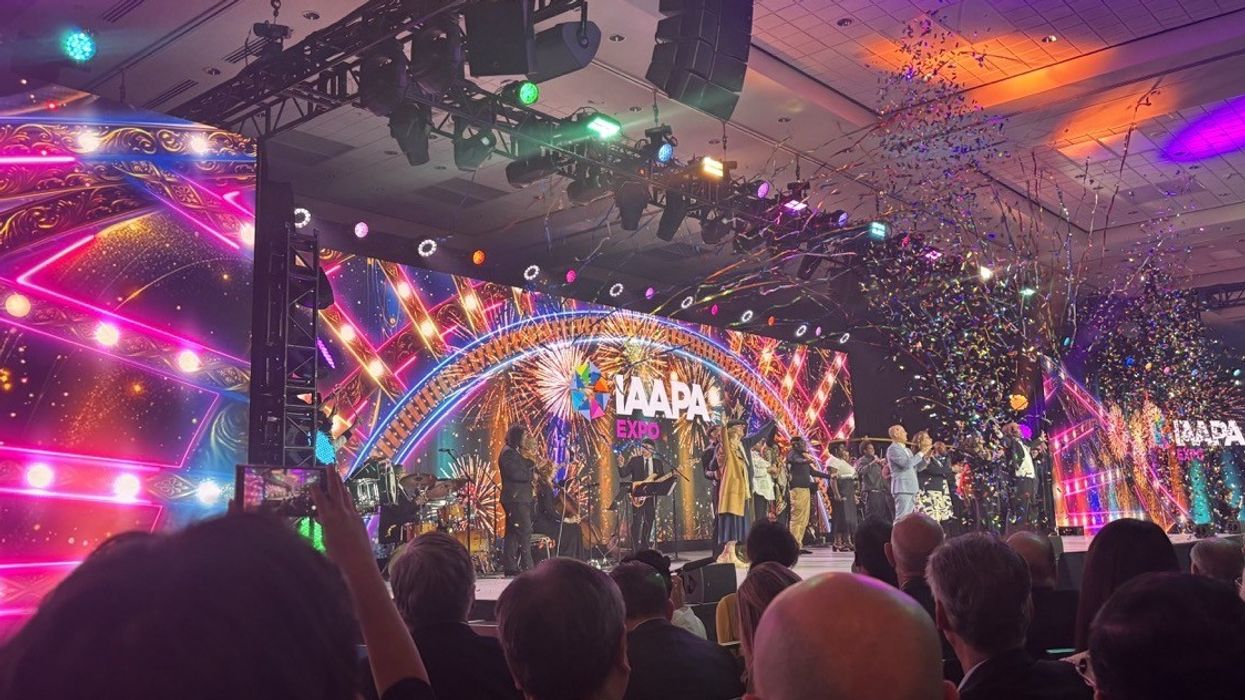


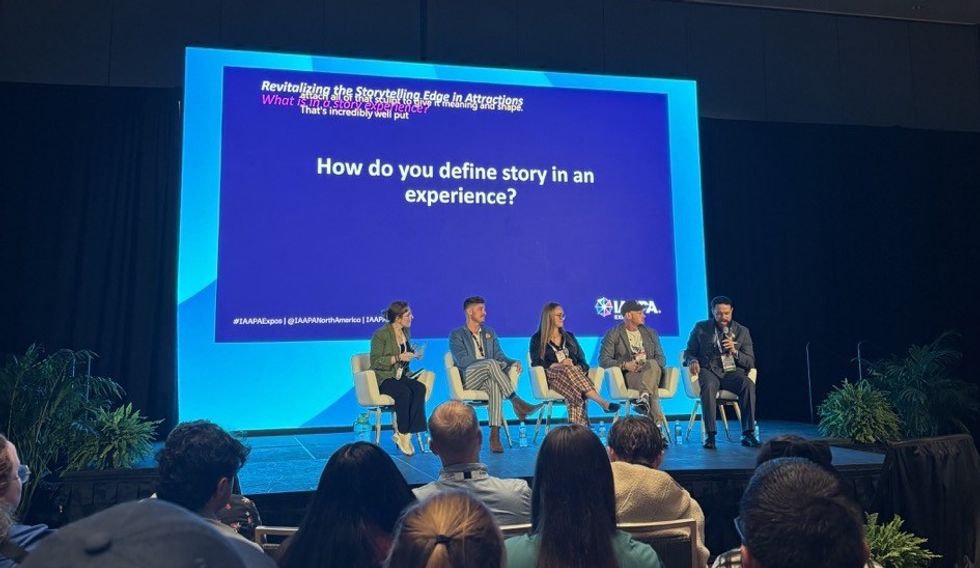
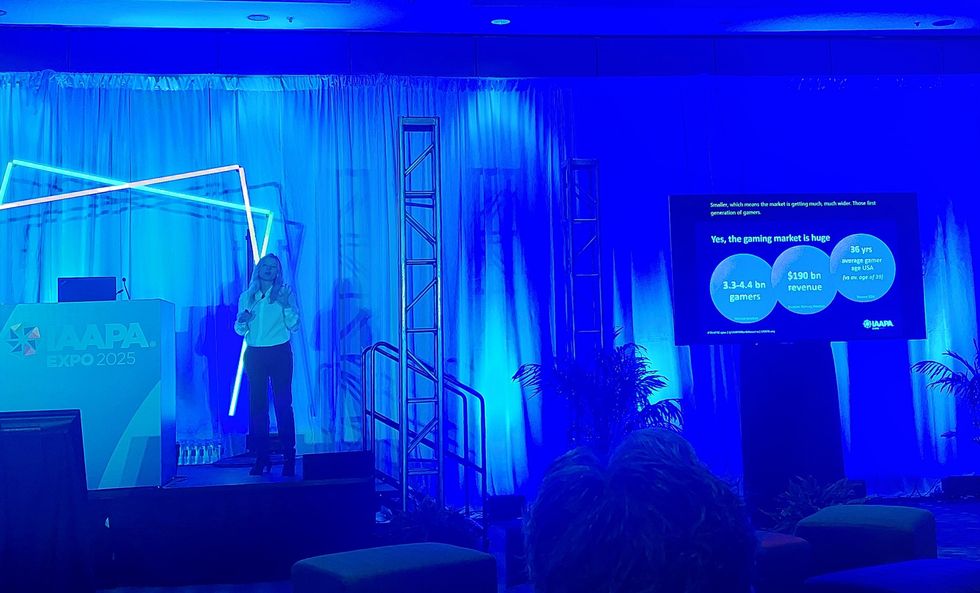
 Detroit Zoo
Detroit Zoo 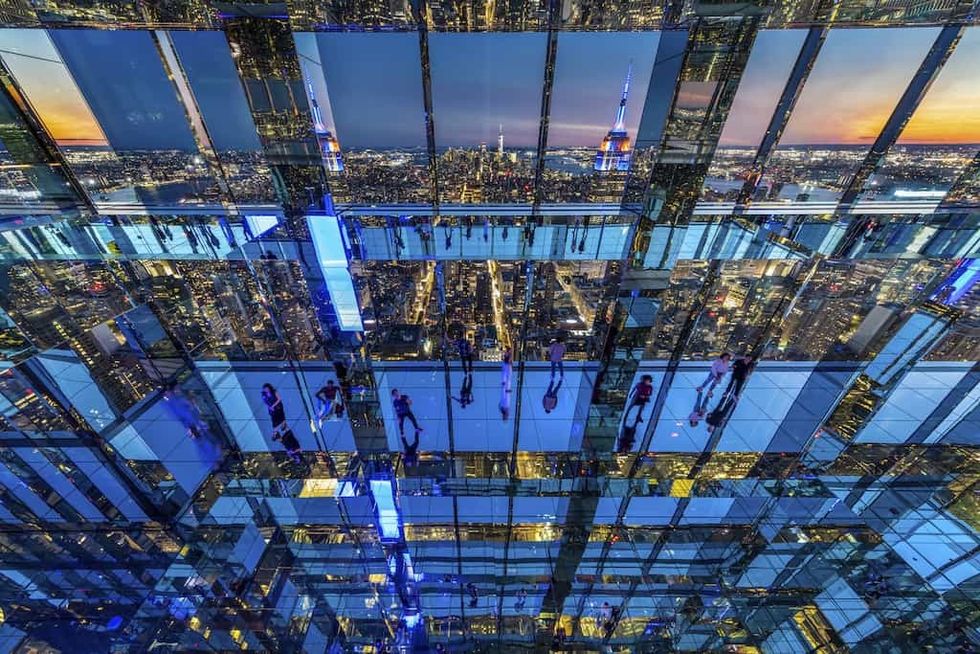 SUMMIT One Vanderbilt
SUMMIT One Vanderbilt 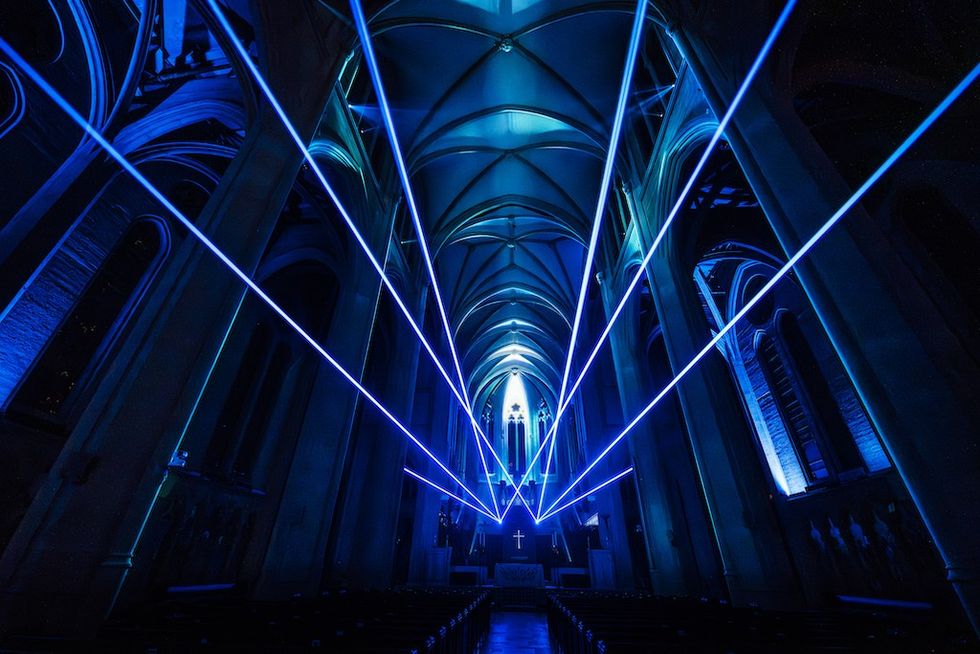 AURA at Grace Cathedral
AURA at Grace Cathedral 
 Cosm, LA
Cosm, LA 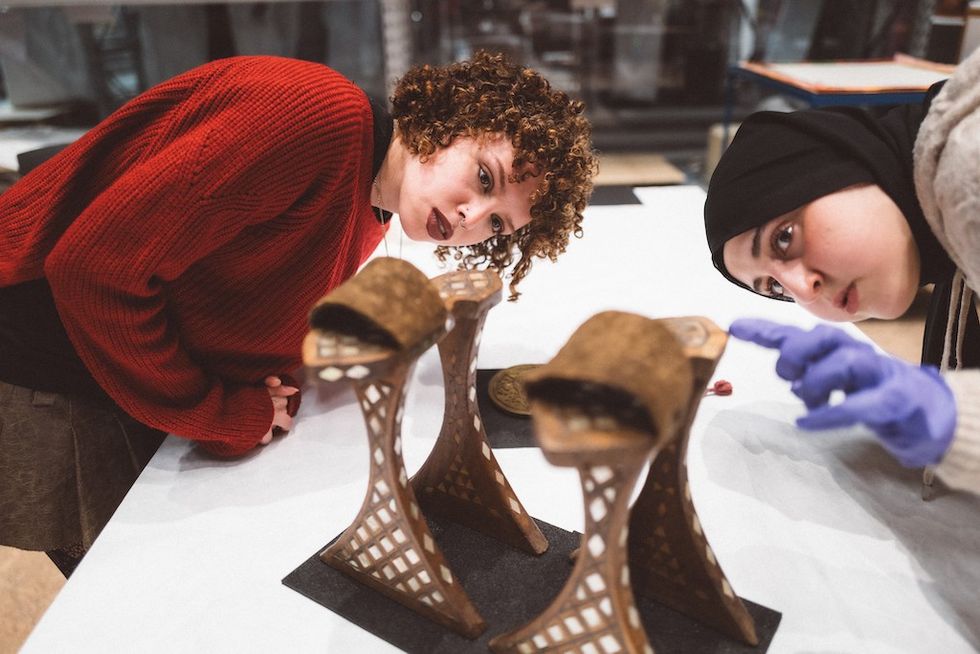 Order an Object appointment at V&A East Storehouse. Image by Bet Bettencourt for V&A, Object pictured - A pair of qabqab, made 1800-1880, Egypt
Order an Object appointment at V&A East Storehouse. Image by Bet Bettencourt for V&A, Object pictured - A pair of qabqab, made 1800-1880, Egypt  CONDUCTR - The Arena from Game Volt
CONDUCTR - The Arena from Game Volt 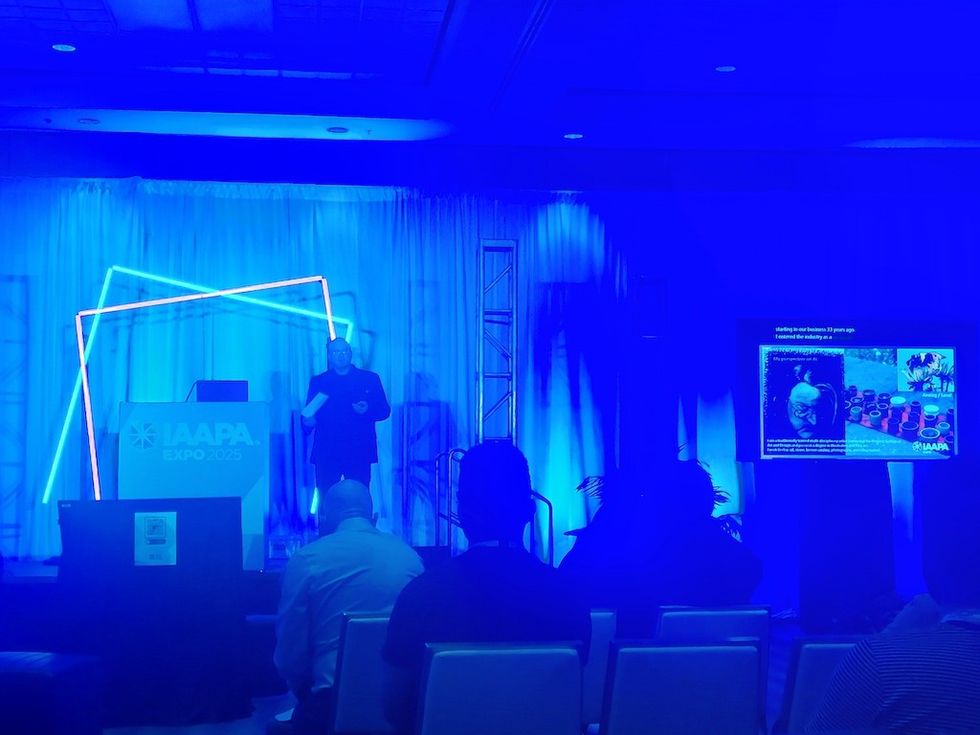
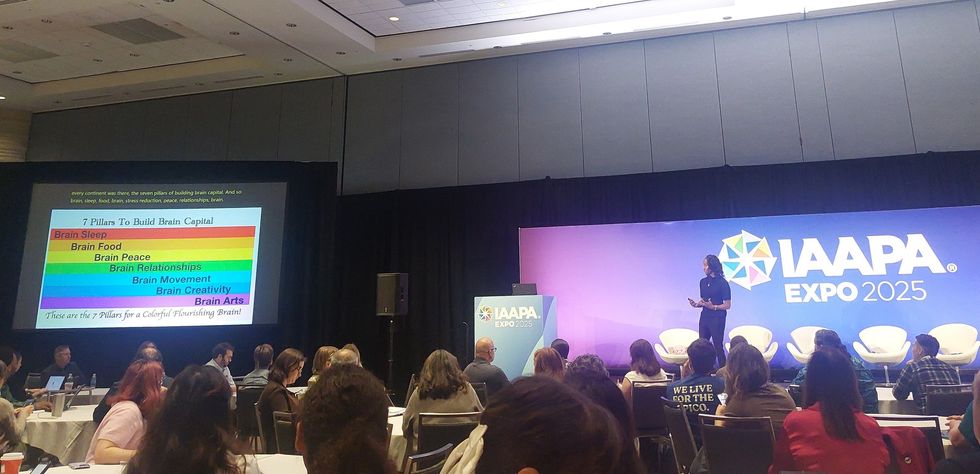
 Star Wars: Galactic Starcruiser
Star Wars: Galactic Starcruiser  Minecraft interactive experience
Minecraft interactive experience 
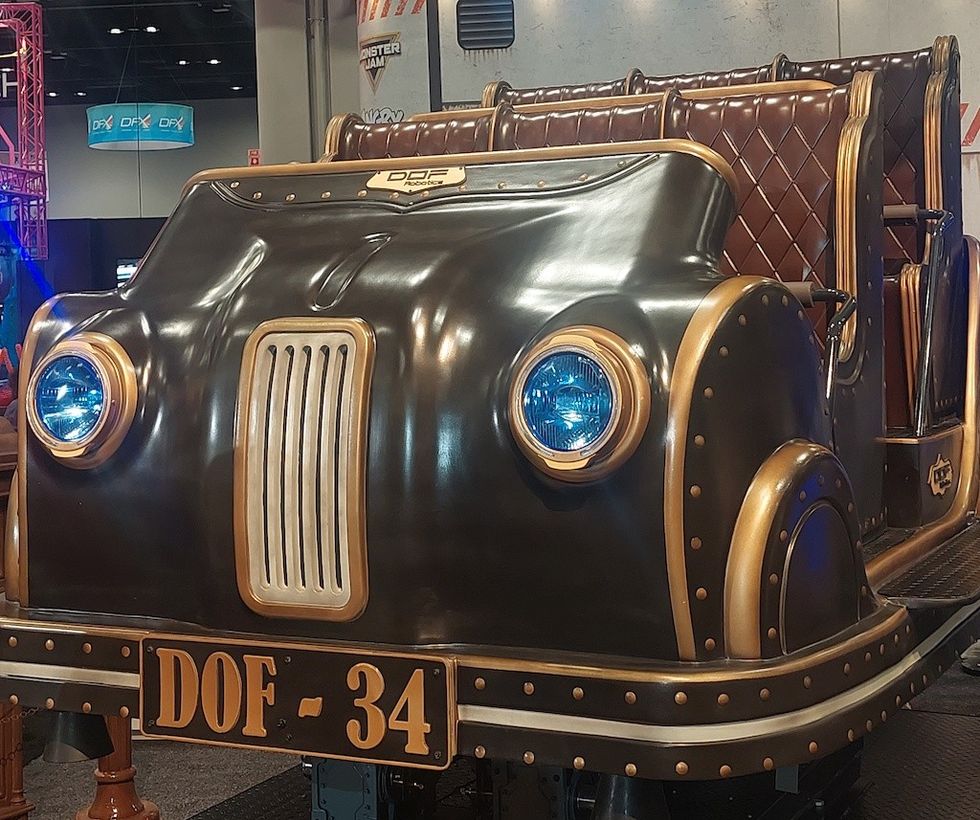
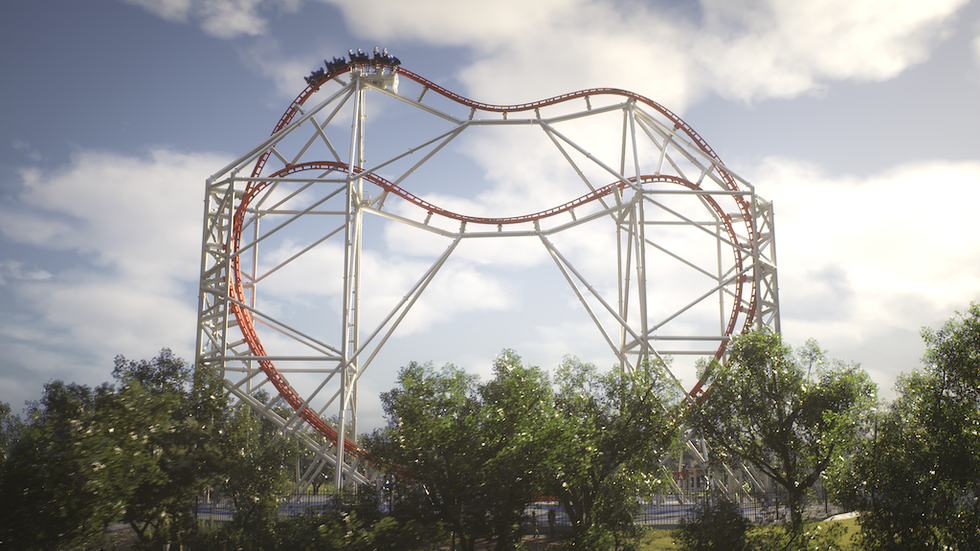




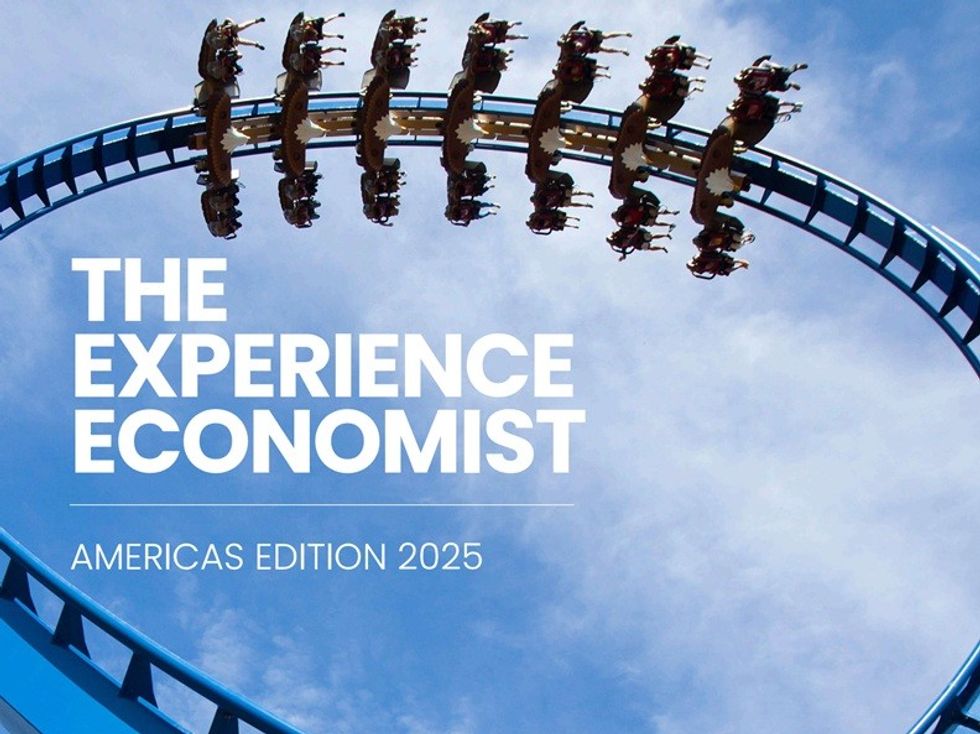
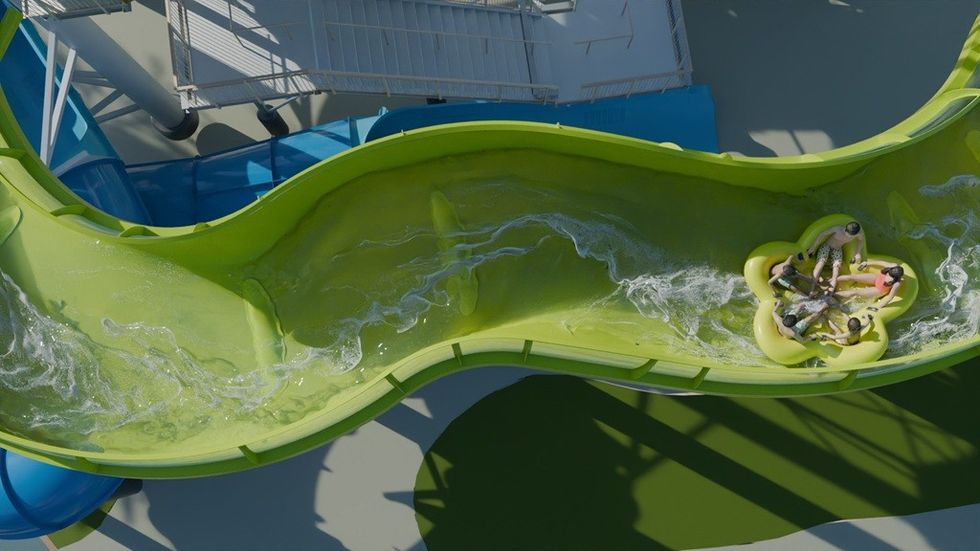



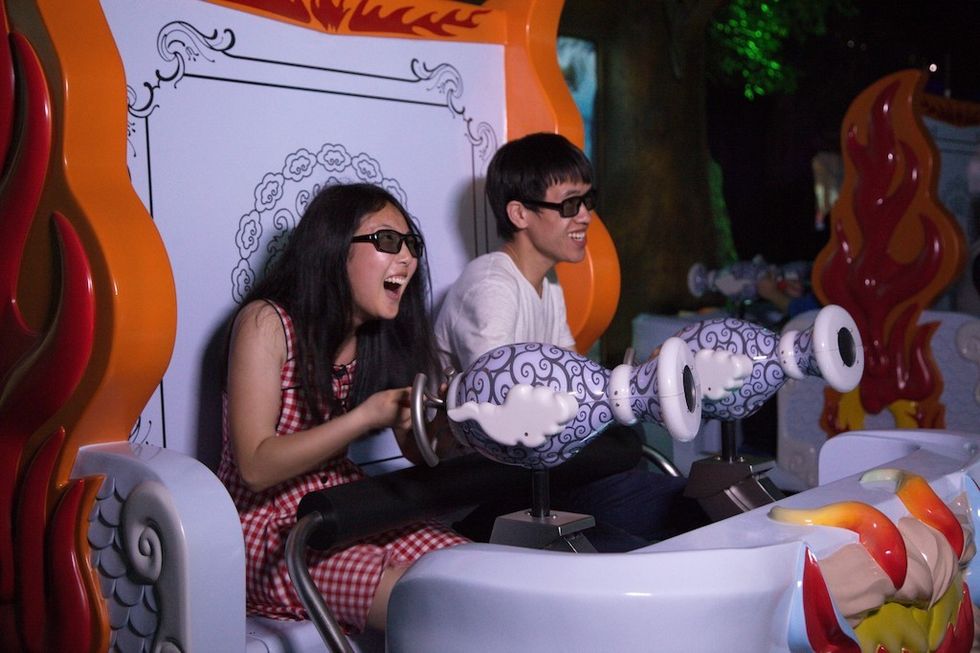
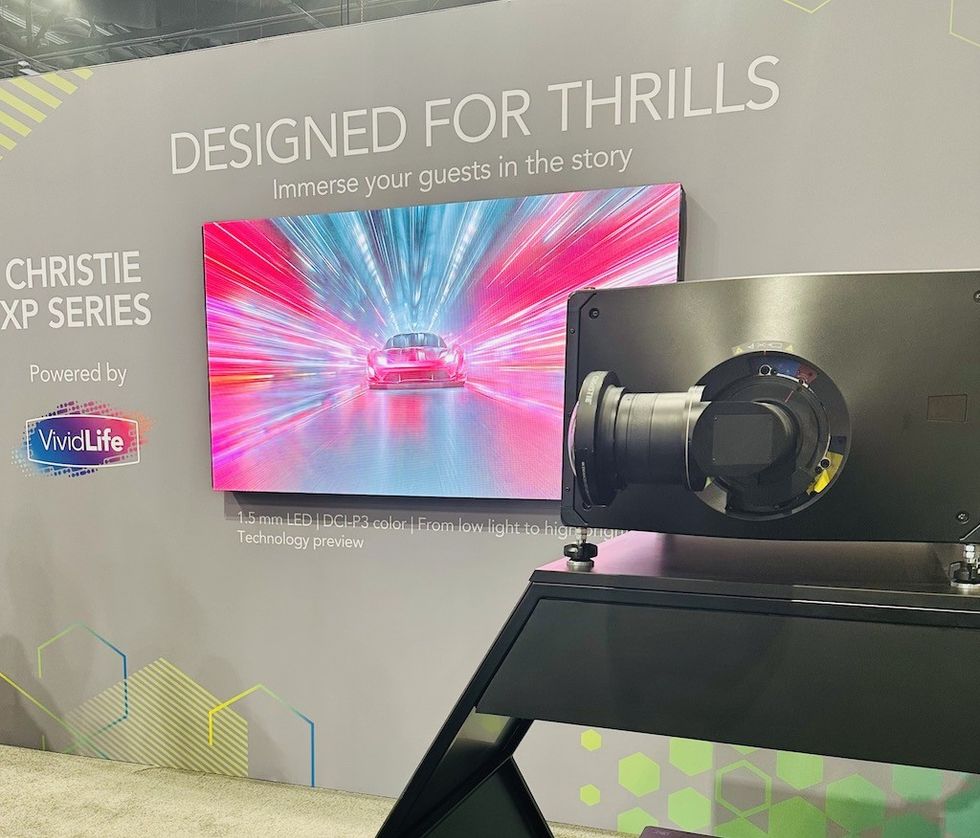
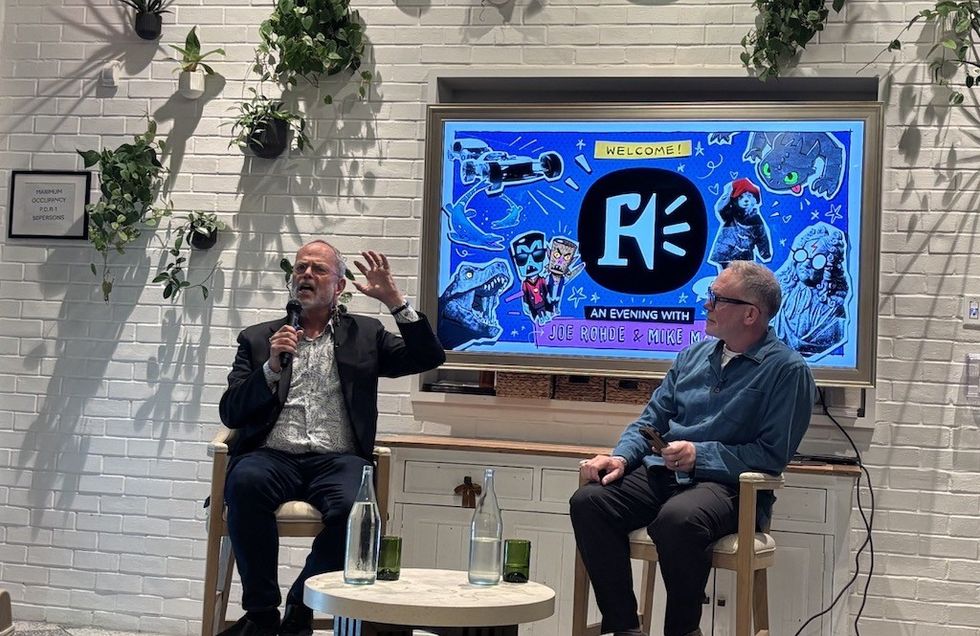
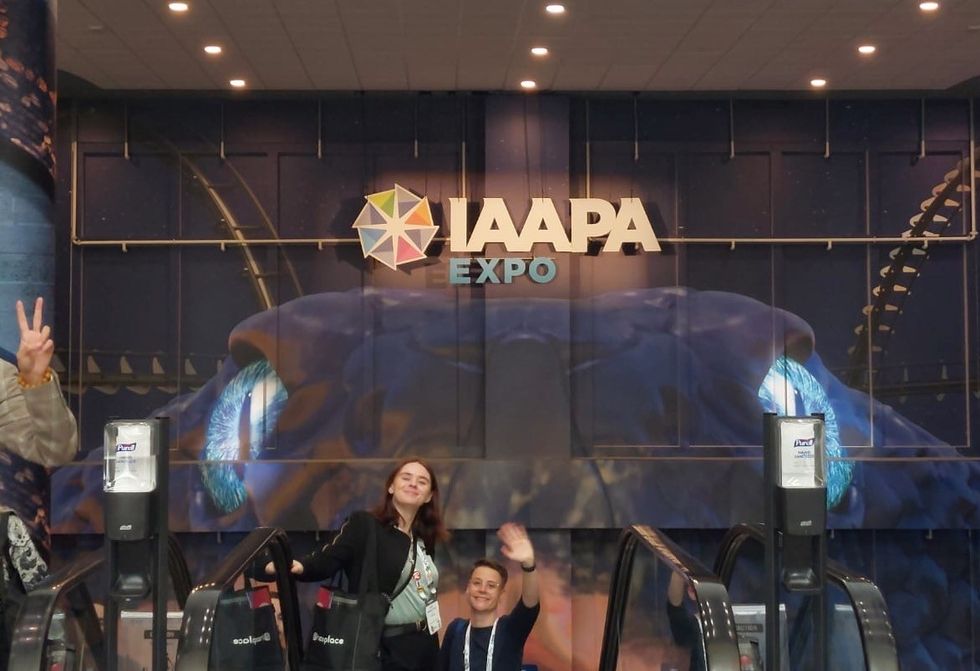 See you next year!
See you next year!
 Ian Macleod and Jordan Whittington
Ian Macleod and Jordan Whittington




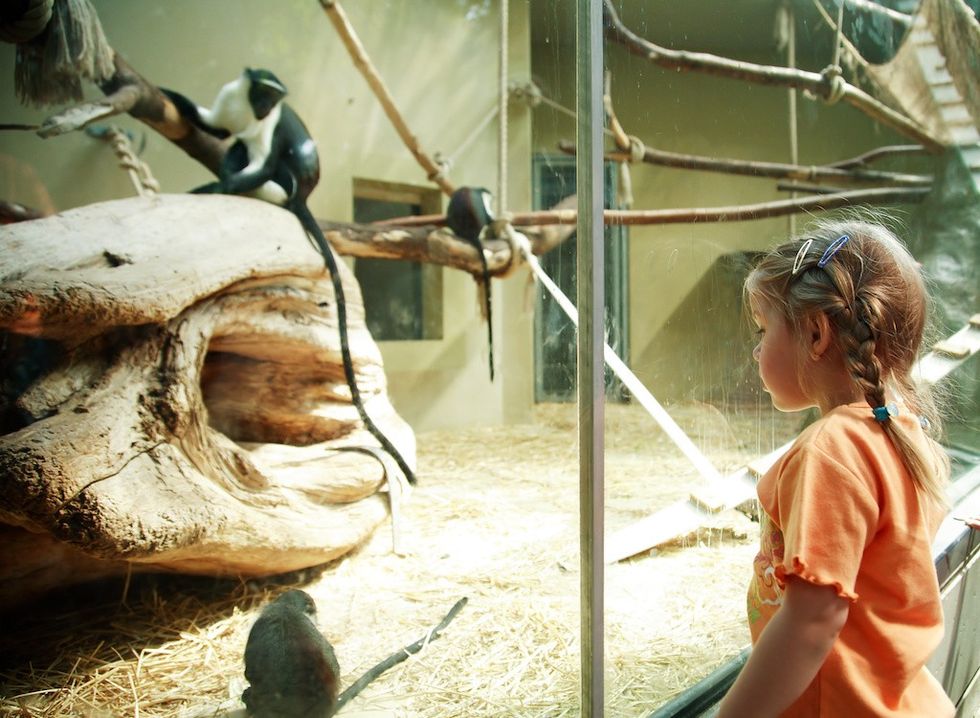
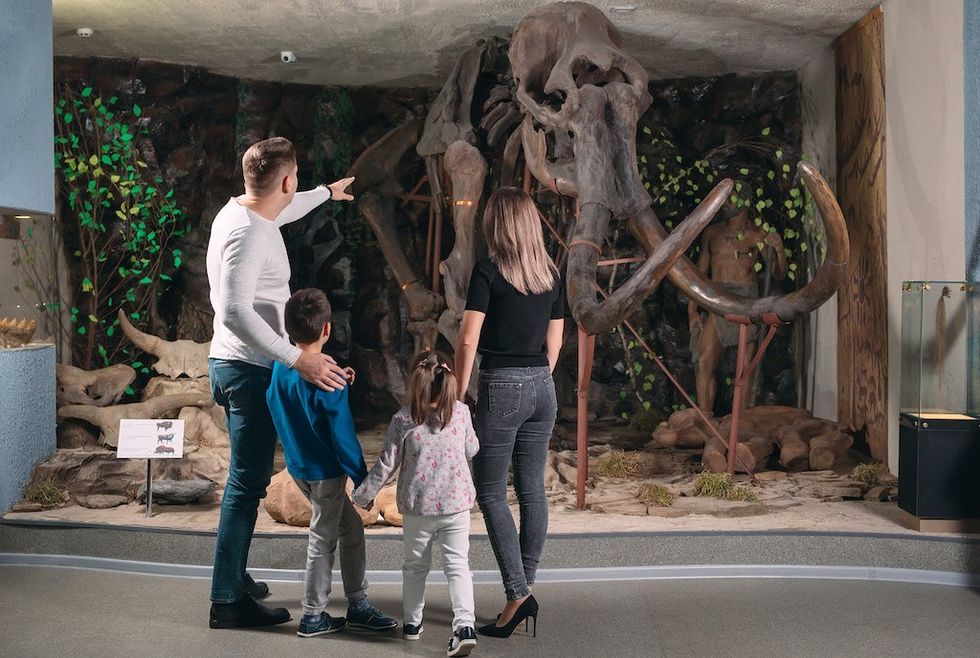
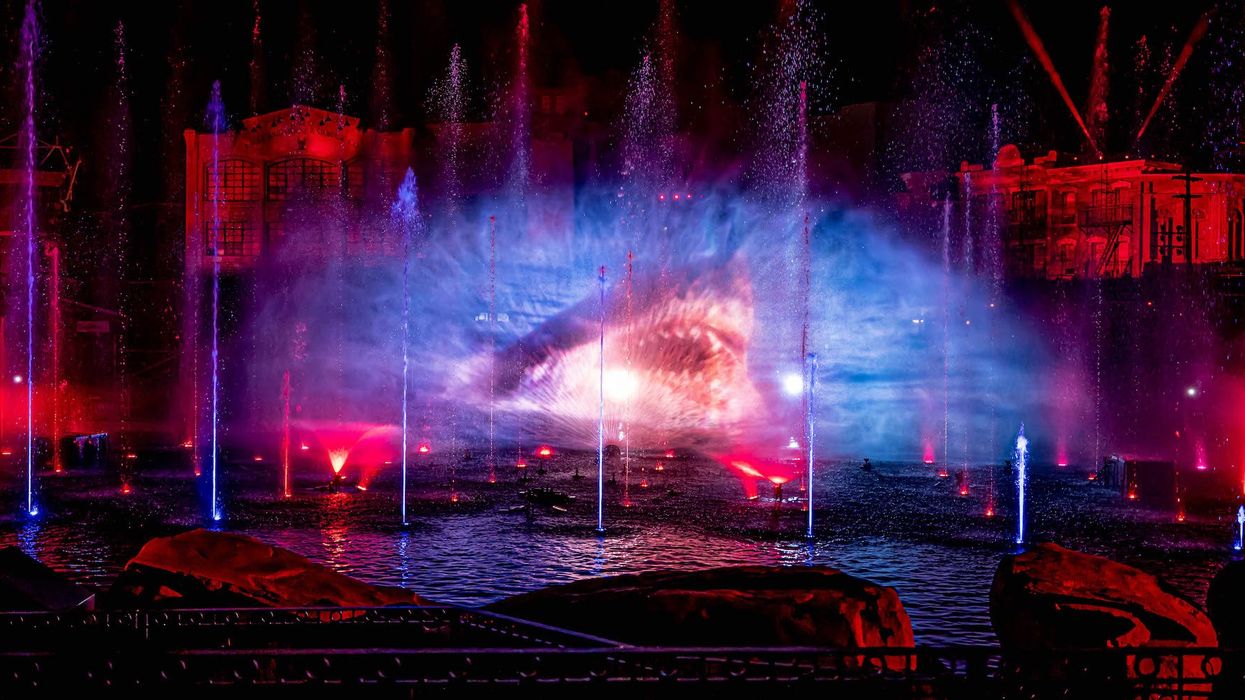
 Jason McManus, Jim Shumway, and Mike Aiello
Jason McManus, Jim Shumway, and Mike Aiello